iPhone 6 Plus vs Samsung Galaxy Note 4: clash of the titans
They're both bigger, but which is better?
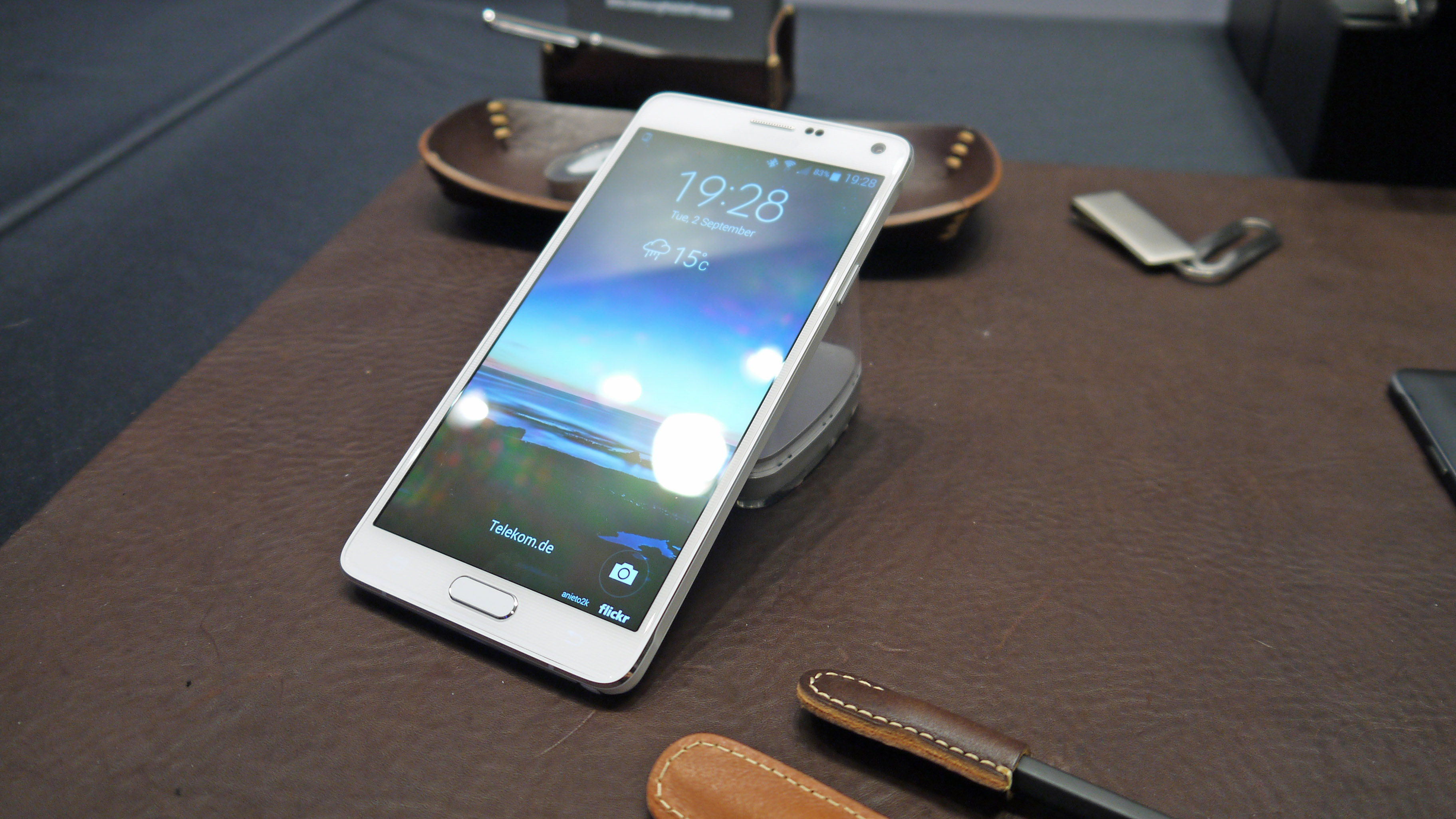
Rumors have flown around for months suggesting that the iPhone 6 would finally come in a larger flavor. Those rumors and leaks were (mostly) proved right when Tim Cook & co. took the wraps off the biggest update to the iPhone line-up since the iPhone 4.
Less than a week after big reveals from many other leading brands, Apple has a lot to prove, especially with a larger form factor.
The big question now is, how does the iPhone 6 Plus stack up against the competition? Namely Samsung's brand new - and similarly sized - Galaxy Note 4.
On paper it's pretty easy to pick holes in the specification, but as Apple has reminded us year after year, specification means little to 'Joe Public', so how do the two compare in detail?
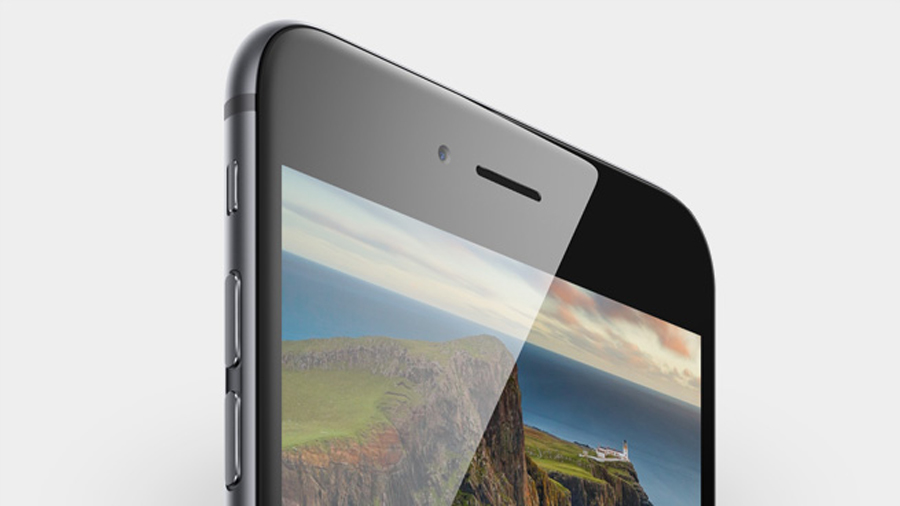
Design
Side-by-side, Apple's iPhone 6 Plus and Samsung Galaxy Note 4 are different beasts. Apple has chosen a unibody construction that is most comparable to the HTC One M8 and Samsung has stuck with a familiar faux leather back, improving the perceived feel and build quality by including a metal strip that runs around the edge of the handset.
Stepping up considerably from the iPhone 5S's dimensions, the 6 Plus measures 158.1mm x 77.8mm x 7.1mm, incredibly close - but slightly thinner - than the Note 4's 152 x 80 x 7.6 mm proportions.
At 172g, the 6 Plus is slightly lighter than the 176g Note 4 two phones, impressive considering its all metal body.
Sign up for breaking news, reviews, opinion, top tech deals, and more.
While the 6 Plus is a smooth, seamless body, Samsung made a few concessions with the Note 4, due to the added functionality of the included S-Pen, something that Apple clearly felt wasn't necessary on its first foray into the world of larger screens.
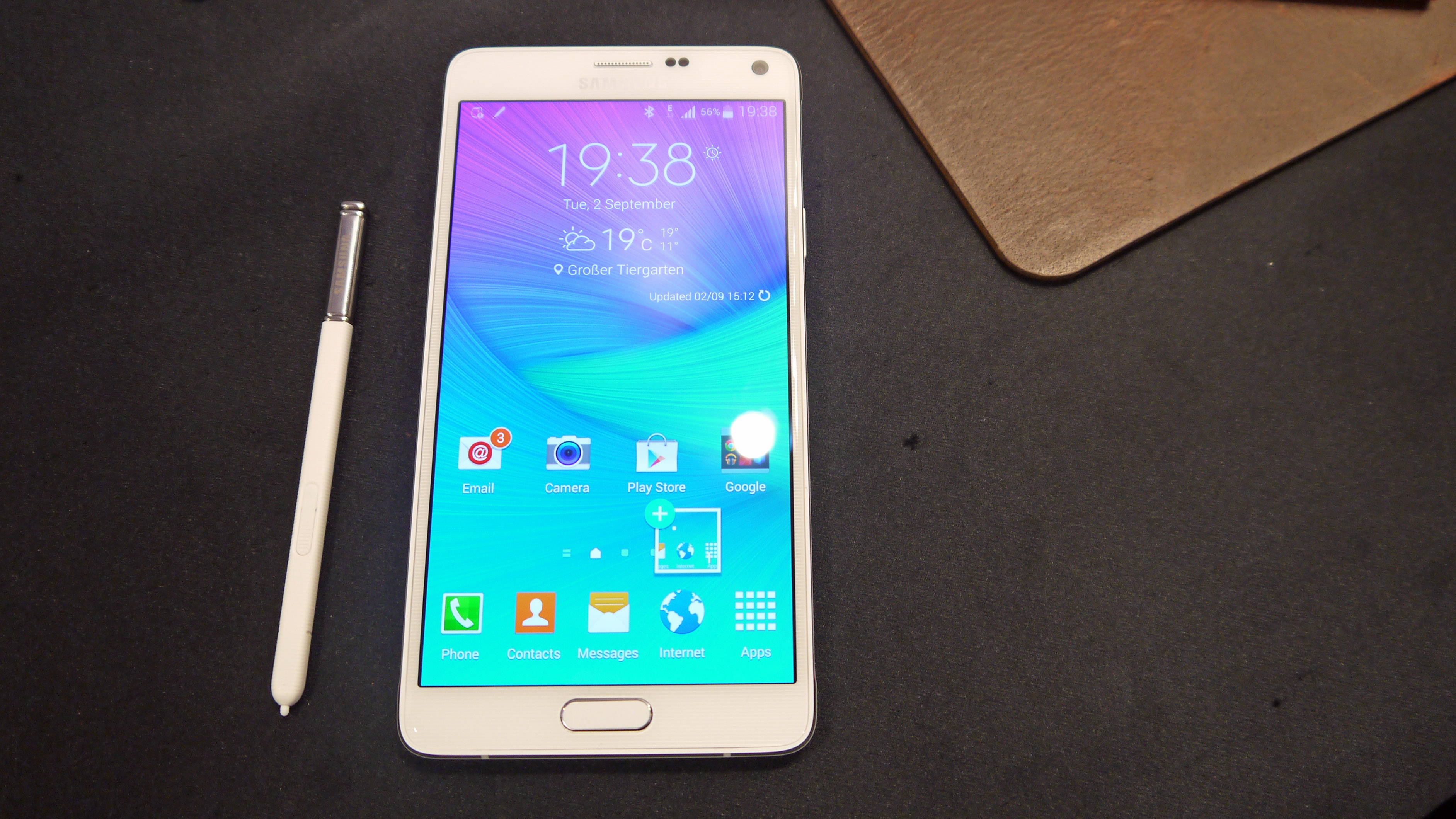
Both are unique designs, and although the Note 4 is the more utilitarian of the two, harbouring extra features such as the in-built heart-rate monitor and water-resistance, the 6 Plus is quite obviously the more sleek, svelte option.
Like the iPhone 5S before it, the 6 Plus comes in gold, silver and 'space gray' color variants. The Galaxy Note 4 offers a slightly different selection in the form of white, black, gold and pink options.
Both are catering suitably well for different tastes, though Samsung is arguably covering a wider demographic with the hot pink model.
Screen
For years Apple told us that we didn't need larger phones, but despite this advice millions have favored sizeable phones such as the Samsung Note and Xperia Z series.
Apple has finally conceded, and is now offering its biggest smartphone to date in the form of the iPhone 6 Plus, and while its specifications aren't quite as high as the Galaxy Note 4, Apple clearly feels it's done enough.

The Samsung Galaxy Note 4 packs an impressive 2560 x 1440 (515ppi) screen, one of the first available on a smartphone (also known as Quad HD), with a size of 5.7 inches.
Meanwhile the 6 Plus settles with just 1920 x 1080 (401ppi) resolution 5.5-inch screen. It's not just any old 1080p screen though, Apple used some impressive wording in its keynote to ensure we were all aware of the technology packed in.
Whereas Samsung uses the well-known Super AMOLED tech in the Note 4, which was really well received in the earlier Note 3, Apple sticks with an LCD panel. This comes complete with IPS and 'dual domain' technology to ensure bright colors and wide viewing angles.
The screen itself has 185% more pixels than an iPhone 5s, but nearly 45% less than in the pin-sharp Note 4.
Whether you'll notice the difference in pixels entirely depends on what you're used to, although it's safe to say that the 1080p screen is a clear improvement over non-HD screens of the iPhone 5.
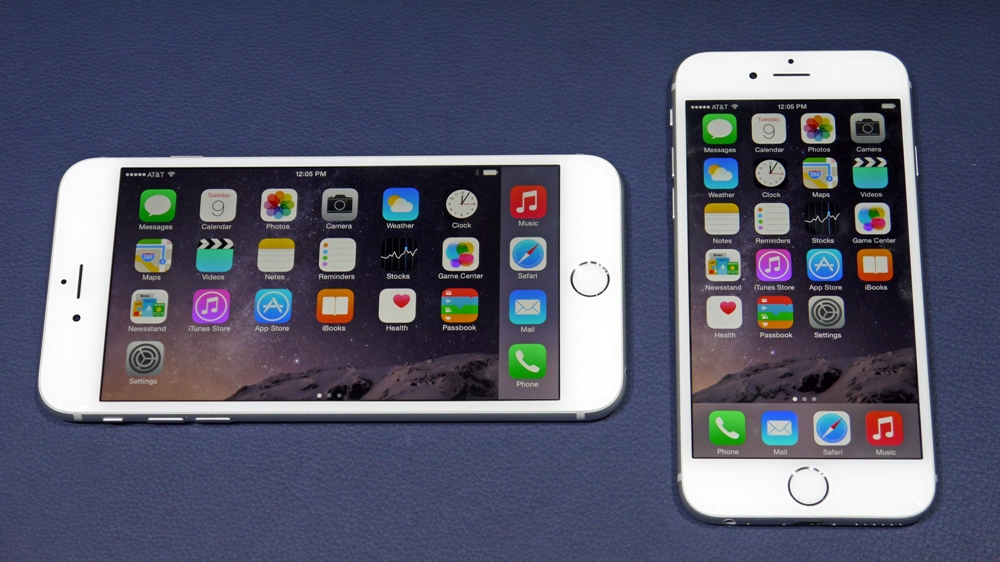
Camera
Where camera technology is concerned, both Samsung and Apple aren't winning any megapixel wars, although the Note 4 has double the megapixel count of the 6 Plus.
The Note 4 is also packing the same 16MP sensor found in the Galaxy S5 with optical image stabilisation (OIS) and 4K video recording at 30fps. The front camera took a spec jump over its predecessor and now packs a wide-angle 3.7MP camera.
In the 6 Plus, Apple sticks with a 1/3-inch 8MP 'iSight' sensor with True Tone flash on the rear, and 1.2MP 'FaceTime' camera on the front. Both featured in last year's 5S. On the surface there are few spec improvements to note, but dig deeper and you'll find improved video performance of 1080p at 60fps, and HD slow-motion recording at up to 240fps.
It might not be 4K, but as Apple likely knows, the world's still not entirely ready for the huge files that 4K video can create. The iPhone 6 Plus also packs OIS, which is also usable during video recording, along with continuous auto-focus.

Battery
In typical Apple fashion, some key specifications are leaving us playing a guessing game. While Samsung was happy to reveal the exact capacity of the Galaxy Note 4's battery: 3220mAh, Apple remains coy about listing the capacity.
So far it has only revealed expected usage times in a variety of scenarios: 80 hours of audio, 14 hours of video, 12 hours of Wi-Fi, LTE or 3G usage and up to 16 days standby.
Samsung on the other hand, has not yet listed detailed battery life expectations. However, with a battery that size it should be as good, if not better, than the iPhone 6 Plus.
Performance
Again, it's difficult to provide a direct comparison of performance between these two giant phones, as Apple is holding its cards close to its chest.
All we know so far is that the iPhone 6 Plus packs a dual-core 64-bit A8 processor - an upgrade over the 5S' A7 processor, with Apple claiming that it is 25% faster, with 50% faster graphics.
The specifications of the Samsung Note 4 are a little easier to digest, packing the first Qualcomm Snapdragon 805 processor to feature in a smartphone, clocked at 2.7GHz.
This coupled with an Adreno 420 GPU should be ample power to Android L and all that comes with it. Some markets will see an alternative octo-core processor that packs quad-core 1.3Ghz and quad-core 1.9GHz processors and a Mali-T760 GPU into one system-on-chip.
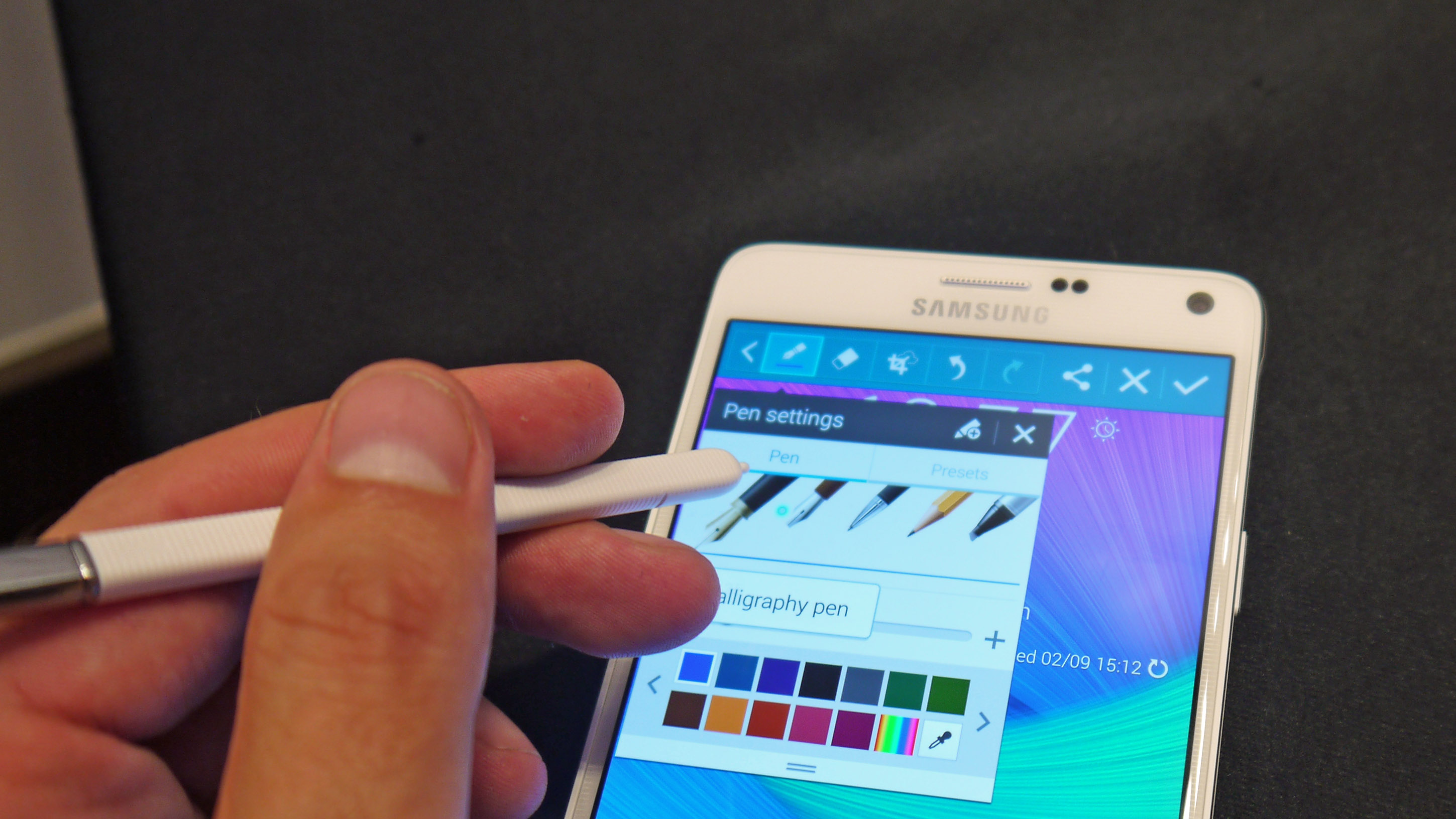
The biggest disparity between the two is the RAM. The Galaxy Note 4 has a whopping 3GB of RAM, where as the iPhone 6 Plus is reported to feature just 1GB of RAM.
Apple didn't directly qualify this in its keynote, but it's likely to be both correct and equally unsurprising. iOS is rather more resourceful with its memory, despite more limited multi-tasking capabilities than Android. With an efficient processor, less RAM doesn't make any noticeable difference in real world usage.
Apple has finally introduced a 128GB version of the iPhone 6 Plus (and in the process quietly killed off the iPod Classic), alongside 64 and 16GB models. Samsung's Galaxy Note instead offers 32GB or 64GB varieties, but has the added bonus of a micro-SD card slot capable of housing an additional 128GB of storage.
Health & Other Features
Both Apple and Samsung have packed a wealth of features into these latest, and largest of smartphones, with health tracking sensors taking high priority in both devices.
The Apple iPhone 6 Plus packs a barometer, next-gen gyroscope and more. Samsung has included these and gone a step further by including a rear-positioned heart rate sensor and UV meter that combine to produce a wide range of health and fitness feedback.
Apple includes the Touch ID fingerprint scanner on the home button, but Samsung counters this with its own equivalent positioned underneath the screen just above the home button. However, with the launch of the iPhone 6 Plus Apple has shown that a fingerprint scanner affords considerably more possibilities beyond unlocking your smartphone.

Apple has finally managed to coerce the major card providers - Visa, Mastercard and American Express - into introducing a digital payment system called Apple Pay that combines NFC, Touch ID and the card information apparently "securely stored" in the Passbook app.
It's no surprise that to get the most out of either of these new smartphones, both will tell you that complementary smartwatches - the Samsung Gear Live and Apple Watch - are key to ensure you get the most information and best experience.
Price
Samsung hasn't yet officially announced pricing for the Note 4, though you can expect it to be more expensive than the Galaxy S5, which had an RRP of around £550-£600 SIM free in the UK, $650+ in the US, and $900 in Australia.
The iPhone 6 Plus' SIM-free price starts at a sizable $749, £619, AU$999, which means it's probably going to be more expensive than the Note 4.
Unsurprisingly, all the major UK networks have committed to stocking both phones, with EE getting a special mention in Apple's keynote for Wi-Fi calling capabilities.
Release Date
Pre-orders of the Apple iPhone 6 Plus start on September 12, and it will go on sale in the US, UK and other territories on September 19.
Much like the details of its pricing, the Samsung Galaxy Note 4 launch date is still officially unknown, though it is expected to start appearing on the shelves sometime in October.